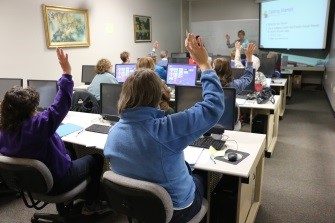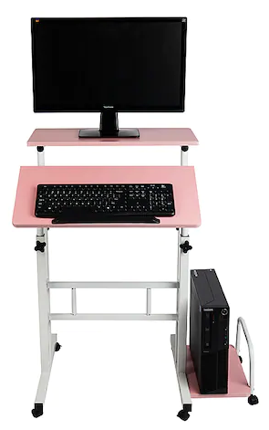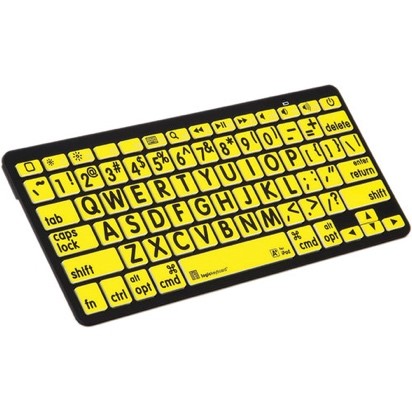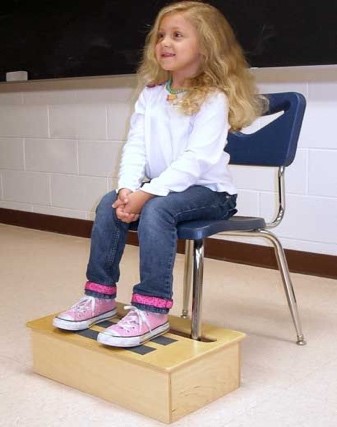Protecting Your Students When Reading: Using a Desktop Computer, Table or Desk, Chair
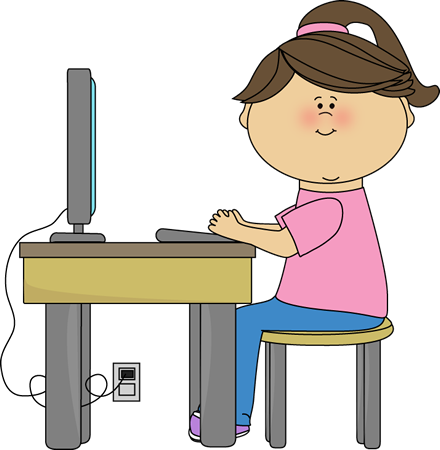
When students use…
- a desktop computer
- on a table or desk
- a typical chair
Children’s ergonomics recommendations tend to be similar to that of adults.
- Seating set-up: 90-90-90
- Elbows 90 degrees - forearms supported on desk/table top
- Hips 90 degrees - back of knees against front edge of chair; feet flat on floor
- Knees 90 degrees - when hips all the way back in the chair
- Supportive desktop
- Monitor at eye level and in front, at least arm’s length away
- Keyboard centered; mouse to right or left
- Wrists should be straight, not bent on desk, keyboard, or mouse
Yet, there is a one big difference… finding technologies appropriate for small sizes! And a bonus? The technology would also accommodate for growth.

Look at this little guy in the picture. His shoulder is raised, his forearm is not supported, the mouse and keyboard are too large and he has to hold his head up to see the monitor. We can only imagine where his feet are!
Smart Practices for Teachers
So, let’s look at what we as educators can do to help. Below, the desktop-computer workstation components will be discussed separately to provide ways to best position students; not only for success, but for protection. Links to external sites that offer additional information are also provided.
Desk or Table
The surface that supports both the desktop computer and the keyboard/mouse is an essential part of a student’s work station. Choosing desks that are ergonomically designed and are height adjustable allow for a proper viewing arrangement and a supportive arm and wrist surface. The ergonomic desk shown to the right, adjusts in height for sitting and standing. Remember, the proper use of ergonomic desks minimize risks related to slouching forward to read the screen.
Monitor
A desktop computer’s monitor should be positioned such that the eye-level of your student is about 2-3 inches below the very top of the screen. It also should be placed close enough so that the student doesn’t have to squint or lean forward to read the words on the screen. If your classroom is bright, placing the monitor (and the desk) perpendicular to a window or light source is best to avoid glare and reduce reflections. Tilting the monitor slightly down might also help. Using positioning equipment for altering the placement of the monitor is readily available and helps to prevent eye, neck and shoulder strain on your students.
Keyboard
Although when reading on a computer, the keyboard isn’t used very often, it should generally be positioned directly in front of a student at desktop height or keyboard tray height (where the hand is when the student’s elbows form a 90 degree angle when the arms are at their side.) For more supportive typing, keyboards that have angular adjustments and/or padding offer options for wrist and positioning. There are keyboards with a variety of features; smaller keyboards for smaller hands, light touch to adjust for strength, those with and without numeric keypads, Bluetooth for wireless access, and adapted keyboards for students who struggle a bit more when typing. Using the right keyboard in the right way can help to prevent join pain, nerve impingement or potential long-term damage, like Carpal Tunnel Syndrome.
Mouse
Like the keyboard, a mouse is not used often when reading on a computer but it is still important to address. The mouse typically sits to the right or left of the keyboard, depending on your students dominate or preferred side. Thus, it should also be at desktop or keyboard tray height ensuring 90 degrees or slightly more at the elbows. Features of a computer mouse vary from size, shape, number of buttons to wired or wireless. An ergonomic mouse is designed to neutralize hand position to prevent injury and pain in the hand and wrist muscles and joints caused by repetitive strain injuries from mousing each day. An ergonomic mouse for small hands is designed for teens and adults who have a hand length less that 6.5 inches. Then, there are mice designed specifically for children.
Chair
Typically, school chairs are standardized, offering a small, medium and large option assuming a one-size-fits-all approach. However, to provide an optimal student desktop computer workstation, it’s extremely important to consider how the chair fits. First, the chair’s seat height needs to match the height of the desk or table and support the proper positioning of the monitor, keyboard and mouse, as outlined above. The chair’s backrest should reach the student’s shoulder blades, with enough support through the lower back to maintain an upright sitting position. When all is good from the seat up, it’s time to look at the feet. Are they well supported and touching the floor? Modifications can be made to ensure a student’s feet are well supported. A sturdy footrest may be helpful to provide a stable surface and increase circulation through the legs. Supports can be as simple as placing a few books under the feet to small stools to ergonomically designed footrests. Then, there are certainly adjustable chairs that can be raised and lowered according to each student that uses it or to fit one child over time. These chairs range in features that offer basic height adjustment to those ergonomic chairs that can be customized to fit a student for a more purposeful seating posture.
Benefits of Proper Posture
Below, Dr. Shaina McQuilkie, DC outlines the benefits of good posture. You can read her article: 10 Tips For Sitting Posture At A Desk.
- Keeps bones and joints in proper alignment to encourage efficient use of muscles.
- Helps reduce abnormal wear and tear on joint surfaces.
- Decreases the stress on the spinal ligaments.
- Prevents abnormal spinal positions.
- Prevents muscle fatigue.
- Prevents injury including strains, sprains, and overuse injuries.
- Contributes to a good appearance.
- Improves self-esteem.
These benefits are what guides you to make good ergonomic decisions in your classroom.
Your decisions and planning will protect students
when using a computer to read.
References:
- https://www.wikihow.com/Sit-at-a-Computer
- https://backintelligence.com/proper-sitting-posture-at-a-desk/
- https://ergonomicshealth.com/ergonomics-for-children/
- https://sunshinewhispers.com/how-to-help-your-child-sit-comfortably-while-using-the-computer/
- https://propelphysiotherapy.com/ergonomics/childrens-ergonomics-tips-remote-learning-workstation/
AIM-VA provides educators a way to have books converted to accessible files for students who have an Individualized Education Program (IEP). Search for books through the AIM-VA website. Books not currently found in the AIM-VA library, can be produced if requested by an AIM-VA DRM (Digital Rights Manager) in any Virginia public school division.



